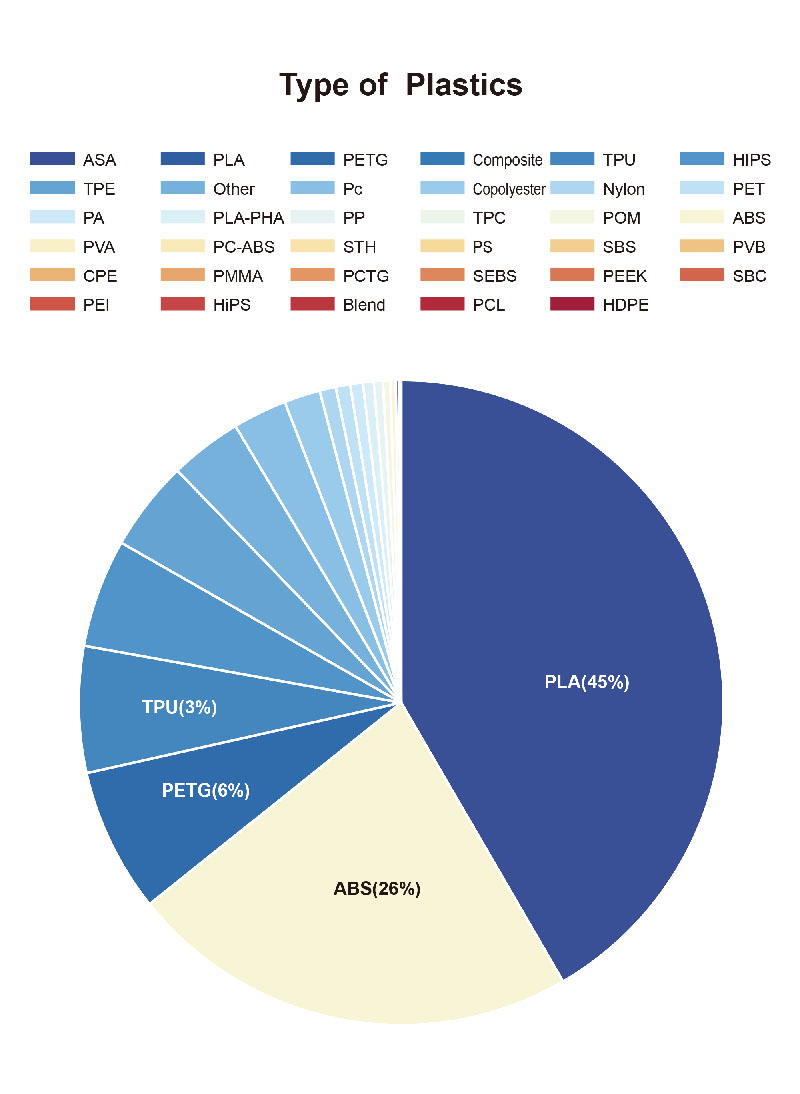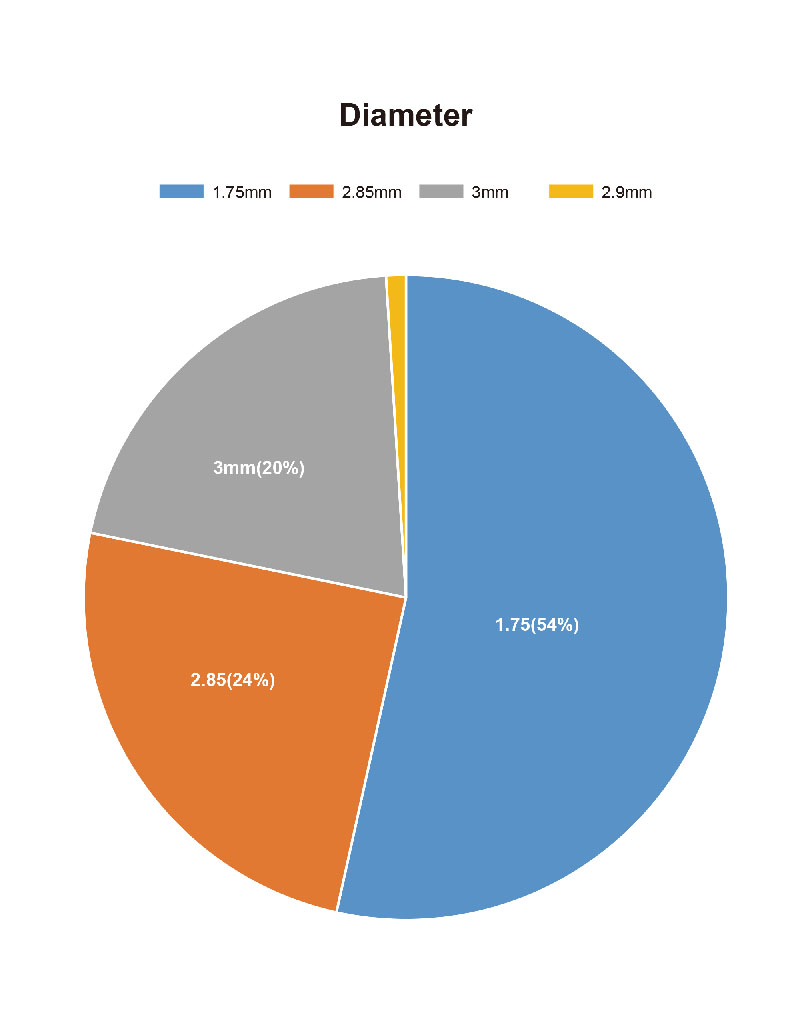3 Top Considerations on Choosing 3D Printer FilamentPosted by jason wu on May 8th, 2019 Now that you’ve known the top trends and innovations in the world of 3D printing and 3D filament, you must also have the business idea to engage in 3D filament business to grab your share in the lucrative 3D printing industry. Once you hook up with your local business owners and clients, then it’s great for you to obtain recurring income each month, each quarter, and each year. However, the key problem is to find high-quality high-performance 3D printer filament from right 3D filament suppliers. Therefore, we’ll then introduce and analyze several factors that need to be taken into consideration when choosing high-quality 3D printer filament. 1. Filament Types Finding the right material is an important step for starting 3D filament business and getting the optimum print results. However, faced with a great variety of choices of different filaments from different 3D printer filament makers or 3D printing materials factories, finding the right one is not always that easy. We therefore must have a basic understanding of some common 3D filament types used in FDM/FFF 3D printing.
We can see from the above picture that the two most common types of filament used in FDM/FFF 3D printing are PLA (45%) and ABS (26%), followed by PETG (6%), Composite (3%), TPU (3%), and others (all other filament types only account for 17% altogether). Therefore, it’s safe to conclude that PLA is a great starting point for you to begin your 3D filament business. 2. Filament Diameter
Different 3D printers use different diameter 3D filaments. In general, there are three common filament diameters adopted in 3D printing industry – 1.75mm, 2.85mm and 3mm. From the above picture, we can see the most common diameter used for 3D printer filament is 1.75mm (54%), followed by 2.85mm (24%) and 3mm (20%). Why is this the case? 1.75mm 3D filament is more common in the marketplace and is a fresher quality plastic. It’s normally newer and rotates out of retailers inventory faster, which lead to newer products to be produced and to be replaced on the shelves. What’s more, it seems to have better extrusion, retraction as well as plastic flowability. 3. Filament Consistency Apart from the filament diameter you choose, it’s also important to take into account such specifications as filament tolerance and roundness. The tolerance is a measurement of how much larger or smaller the diameter of the filament can deviate from the indicated size at any given point. Roundness, which is a measurement of deviation expressed as a percentage, shows how consistent the shape of the filament is. Nowadays, many 3D printers have spring tensioners installed in the extruders so that small variations in diameter such as ±0.03mm no longer pose a threat. Advice from TIANSE 3D All things are difficult before they are easy. To choose 3D printer filament that most suits your market and your needs, TIANSE 3D recommends you to make a brief research in your local market and try out several different filaments. In this way, you can well know your local market and clients, establish various possibilities of different filaments, and finally find what you actually need. If you’re completely new to 3D printing, we recommend you choose TIANSE PLA 3D printer filament as your starting point as it is the easiest material to print. As one of the most commonly used materials in FDM/FFF 3D printing, PLA performs pretty well during 3D printing and is available in a wide array of colors. Furthermore, PLA is biodegradable and more environmental-friendly than ABS. Like it? Share it! |




